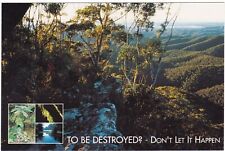
Forests around the world are not the stable and unchanging ecosystems they have been assumed to be. Without the occurrence of wide-spread disturbances in nature, such as forest fires, icing, or volcanic activity, forests will eventually be impoverished, owing to a lack of phosphorous. The findings – from researchers David Wardle, Richard Bardgett and Lawrence Walker – are reported inScience.
The three researchers examined soil profiles from forested land in six places around the world: Arjeplog in Swedish Lapland, Alaska, Hawaii, Eastern Australia, and southern New Zealand. In all places there were soils of varying age, from very young to several thousand years old. The oldest soil, in Hawaii, was 4.1 million years old. In all six locations forests grew least well in the oldest soils, because the access to absorbable phosphorous was limited in comparison with access to absorbable nitrogen. When soils age, less phosphorous becomes available to trees, since phosphorous is not biologically replenished in the soil or supplied to the ecosystem in any other way.
The scientists draw several conclusions from their findings. First, they show that greater disturbances are necessary if we wish to renew forest ecosystems. What type of disturbances are required varies with soil type, but forest fires, icing, or volcanic activity are possible mechanisms. If such disturbances do not occur, forests will not be endlessly renewed. Ultimately, the lack of phosphorous will become such a hindrance that the soil will no longer be able to provide sufficient nourishment for densely planted forests with large trees.
A second conclusion is that productive forests are temporary, seen from the perspective of a thousand or ten thousand years: if no disturbances occur in nature, then such forests will slowly be impoverished. The patterns for how this impoverishment takes place, and its underlying mechanisms, are the same, regardless of what type of forest it is and where it is located on earth. The same processes occur in boreal, temperate, and tropical climates, albeit at different rates.


















Comments are closed.